Monday found a small group of us out for Sea Ice Training. The purpose of the course was to teach us how to assess the thickness of the sea ice around Ross Island. If you remember, McMurdo is on an island and not actually on the continent of Antarctica. So, in order to head up along the coast or anywhere within "driving" distance, you'll find yourself on ice, and the ice can be upwards of over 3 feet thick--usually 2-3 meters--but not in every location. Sea iceThere are terms for different types of ice. Shorefast ice forms along coasts and is attached to land. Pack ice is ice floating in open water. Multiyear ice is ice that has survived at least 1 summer. First year ice is ice that has not yet survived a melting season. thickness varies and therefore can create a hazard when traveling...as can napping Weddell seals.
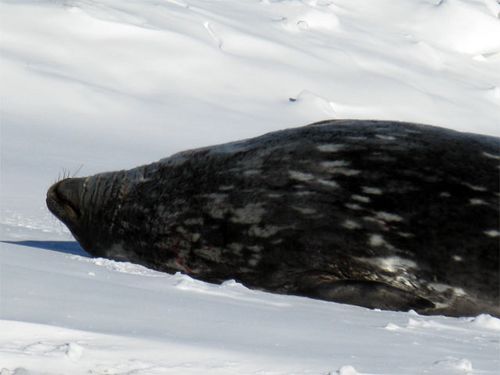
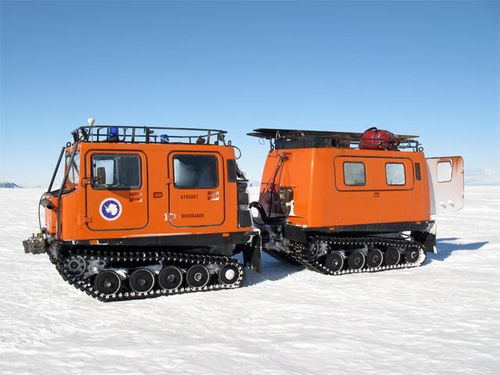
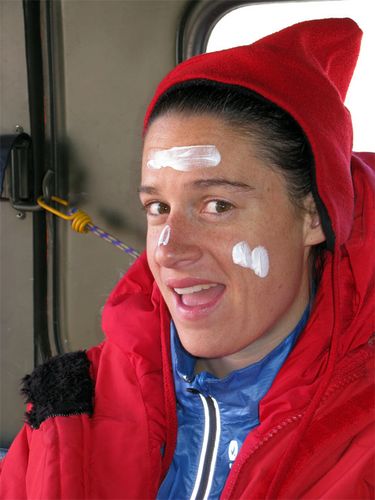
We actually crossed over from the multiyear ice to the annual ice, and once we did, it became important to look for "cracks" in the sea ice. Ice must be a minimum of 30 inches thick for travel, and there's a whole protocol for traveling over ice cracks as is relative to the size of the vehicle's track that you are traveling in.
Because the annual ice does quite a bit of shifting, it will crack and refreeze, crack and refreeze so the initial crack gradually widens and over time is covered with snow. If you look carefully and look for linear features and changes in the snow's texture, you should be able to spot the potential trouble spots.
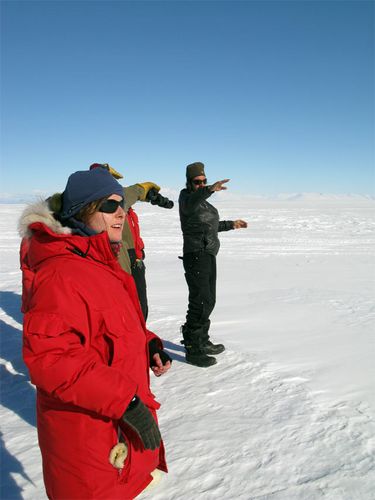
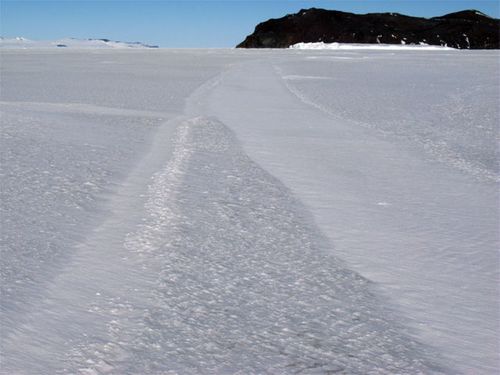
Once a crack is spotted, it must be shoveled off to prepare the surface for drilling and measuring the ice thickness. The other benefit to shoveling is that it allows you to see each time the ice cracked and refroze. While it may look smooth on the surface, there are actually ridges hidden under the snow cover that reveal each fracture/refreezing event.
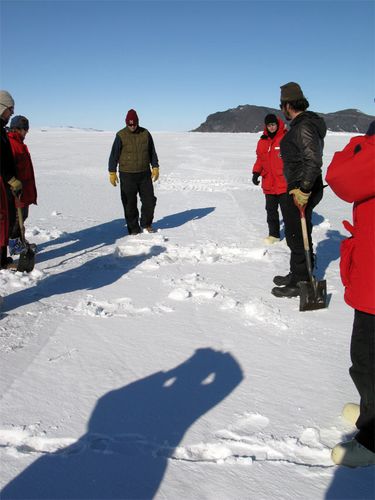
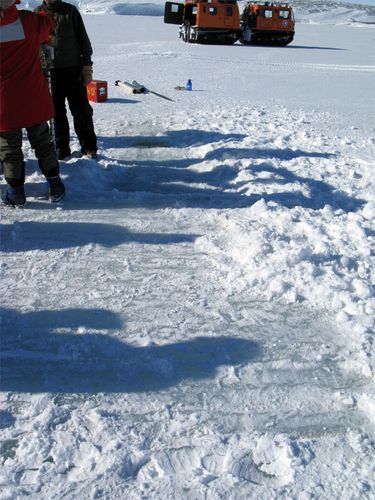
Drilling begins at one side of the crack and continues to the opposite side, but it's important to drill a hole in each spot where you can identify a fracture/refreezing section. That means being prepared to drill several holes whether it be with a hand drill or an Echo drill.
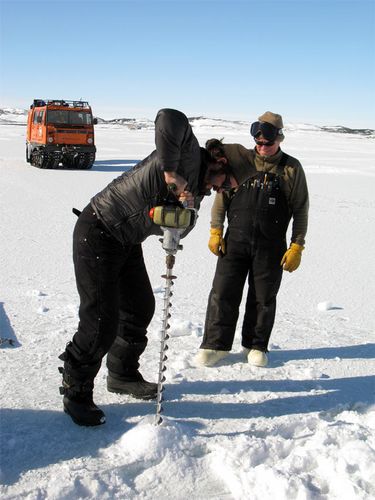
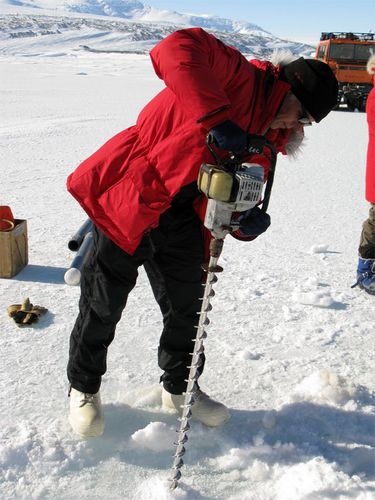
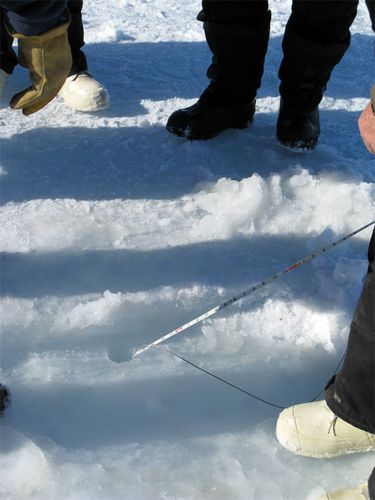
I can't stress enough that ICE THICKNESS CAN VARY GREATLY! For instance, our second identified crack was over 15 feet across, but ice thickness varied from 3 feet to just about 31 inches. Remember the 30 inch rule. We're pretty close to that in that one spot, so it's only a matter of time before that area will be off limits to travel.
I can also tell you that the sea ice breaking up is about two weeks ahead of schedule and that the ice runway I landed on a week ago is undergoing some serious changes. The ice temperature has gone up 10 degrees in a week! As a result, it's only a matter of time before that runway is closed and all flights will be shifted to the Pegasus Runway about 45 minutes away.
Even though we were out there to learn how to be safe, we did have many enjoyable moments, but you'll have to wait for Part II tomorrow.
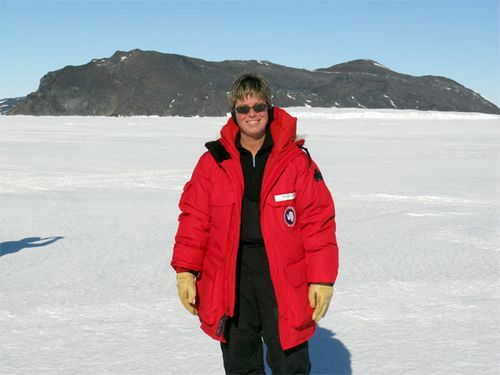


Comments